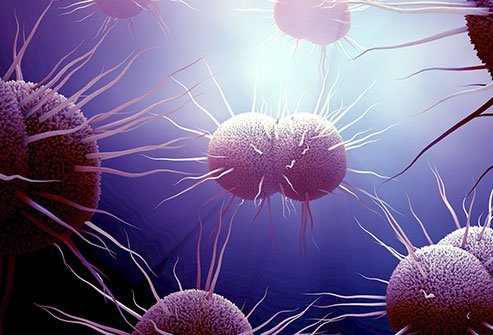Bacterial Infection Examples
-
Examples
- Bacterial infections
Bacterial infections
Bacteria are microbes that are invisible to the naked eye because of their size. You can observe them under a microscope.
There are two types of bacteria:
- beneficial (or good) bacteria and
- harmful (or bad) bacteria.
The beneficial ones stay in the body and help in digestion, make some vitamins, and fights off infection. The harmful bacteria are found in the environment and can enter your body when you come in contact with them, causing diseases when your immunity is weak. These cause infections and hence are also referred to as infectious bacteria.
How severe is a bacterial infection depends on what types of bacteria are involved. Bacteria most commonly infect the gut, skin, and respiratory system including the lungs, urinary tract, and vagina. There are more than a hundred bacterial infections, but the most common examples are as follows:
- Bacterial infections of the digestive tract: Food poisoning, also known as Salmonella poisoning, is most often caused by the non-typhoidal Salmonella bacteria found in the intestinal tracts of humans and other animals. It mostly occurs after eating undercooked poultry. The infection causes bloating, diarrhea, and vomiting. Gastrointestinal (GI) infections can also be caused by Escherichia coli (E. coli). The beneficial strain lives in the gut, but the harmful strain causes infection in the stomach and intestines. The infection usually goes away on its own, but sometimes, it can be life-threatening. The common symptoms are abdominal cramps, vomiting, and diarrhea. E. coli bacteria commonly spread through contaminated food and sometimes hand-to-hand contact. Infection of the stomach and intestine with Helicobacter pylori (H. pylori) can lead to chronic gastritis and gastric ulcers. These disorders are mostly chronic ones and can cause severe abdominal pain and weight loss. Certain foods are known to trigger the symptoms of chronic gastritis and ulcers.
- Bacterial infections of the lung: Tuberculosis is a highly communicable or infectious disease caused by the Mycobacterium tuberculosis (M. tuberculosis) bacteria. it may cause chronic cough for months and fever during evenings; sometimes, cough blood, and many times, there is a drastic weight loss, giving an emaciated look. Bacterial pneumonia is a lung infection that can be caused by any of the bacteria: Streptococcus pneumoniae, Klebsiella pneumoniae, Pseudomonas aeruginosa, and others. The bacteria get transmitted from the infected person to a healthy person through coughing or sneezing. The condition causes high-grade fever, severe coughing, and shortness of breath.
- Bacterial infections of the vagina and urinary tract: Bacterial vaginosis is an infection of the vagina that can lead to an itchy vagina, a greyish sticky vaginal discharge, and painful urination. The beneficial and harmful bacteria make up the normal vaginal flora. If the number of harmful bacteria increases in the vagina, it leads to bacterial vaginosis. Urinary tract infections are most commonly caused by bacteria. They are more common in women than in men. These include cystitis (infection of the urinary bladder) and urethritis (infection of the urethra). The common symptoms include burning or painful urination, frequent trips to the bathroom, and sometimes abdominal pain. Gonorrhea is the second most commonly reported bacterial sexually transmitted infection in the United States. It is caused by the bacteria Neisseria gonorrhoeae and infects both men and women. It most often affects the urethra, rectum, or throat and can also affect the cervix in women.
- Bacterial infections of the skin: Common bacterial skin infections include:
- Cellulitis (swollen and red skin that is typically painful and warm to the touch)
- Erysipelas (similar to cellulitis but that affects the upper or superficial layer of skin)
- Impetigo (red sores on the face that burst and crust over, especially around a child's nose and mouth and on the hands and feet)
- Folliculitis (small red or white bumps around hair follicles)
- Furuncle (boil)
- Carbuncles (cluster of boils)
Vibriosis (non-cholera) is a bacterial infection that infects wounds. It can be caused by any of the Vibrio species that live in warm seawater: Vibrio vulnificus, Vibrio parahaemolyticus, Vibrio vulnificus, and Vibrio alginolyticus. People catch the infection by consuming raw or undercooked shellfish.


